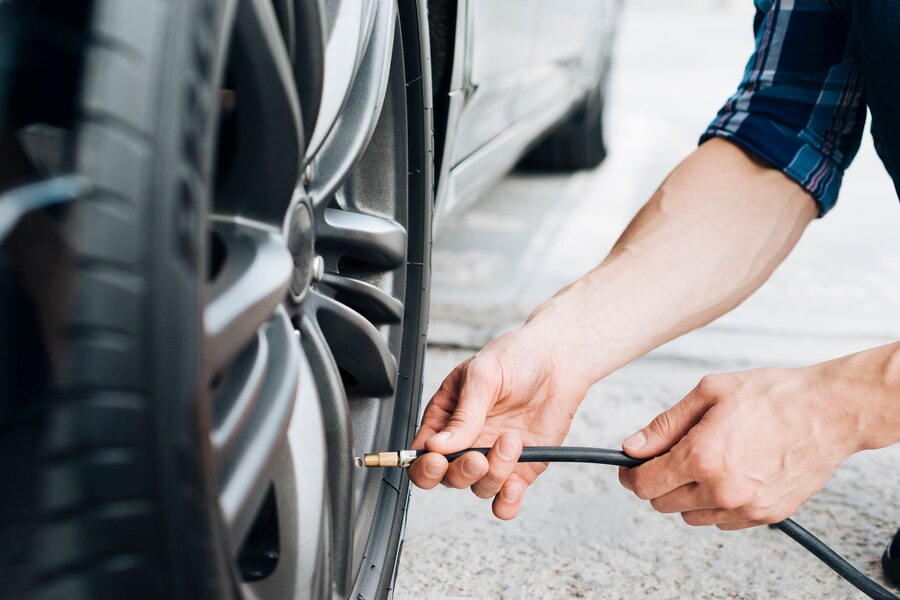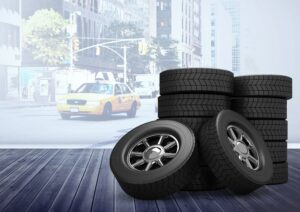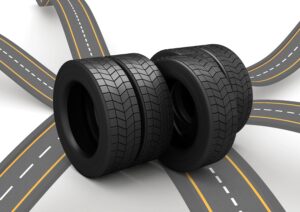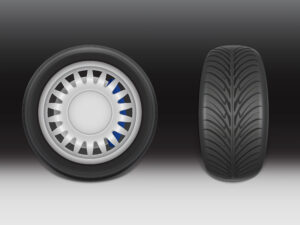Mastering Swift Tyre Pressure for Optimal Performance and Safety

Maintaining the correct Swift tyre pressure is not just about ensuring your tyres look good; it’s a crucial aspect of keeping your Maruti Suzuki Swift running smoothly, efficiently, and safely. By paying attention to the Swift tyre pressure, you can optimize your vehicle’s fuel efficiency, extend the lifespan of your tyres, and improve overall vehicle handling. Whether you’re a daily commuter or someone who enjoys long drives, knowing the recommended tyre pressure for Swift is vital to your car’s performance.
In this guide, we’ll cover everything from the optimal Swift tyre inflation to how the correct tyre pressure for mileage can benefit you. We’ll also dive into important tips for tyre wear prevention for Swift and provide a detailed tyre maintenance guide for Swift owners. Let’s start by exploring the importance of the Swift tyre pressure and why it should be on every driver’s radar.
What is the Recommended Tyre Pressure for Swift?
The recommended tyre pressure for Swift is a critical factor for ensuring your tyres perform optimally. For a Maruti Suzuki Swift, the ideal tyre pressure is as follows:
- Without Load: 29 PSI (front and rear tyres)
- With Load: 33 PSI (front and rear tyres)
These values help maintain the optimal Swift tyre inflation, which is crucial for proper vehicle performance, safety, and tyre longevity. The Swift tyre pressure can change depending on your load and driving conditions. When you’re driving long distances or carrying heavy cargo, it’s important to adjust your tyre pressure accordingly.
Regularly checking the correct tyre pressure for mileage ensures you get the most out of your fuel efficiency and tyre lifespan. If the pressure is too low or too high, it can lead to increased fuel consumption, uneven tyre wear, and compromised safety. Always refer to your vehicle’s manual for the most accurate PSI values, and keep in mind the differences between front and rear Swift tyre PSI.
Factors Affecting Tyre Pressure
Several factors can affect your Swift tyre pressure over time, so it’s essential to stay vigilant. Here are the key factors:
- Temperature Changes: As the temperature drops, so does your tyre pressure. This is particularly important during winter months, as cold air causes tyre pressure to decrease by about 1-2 PSI for every 10°C drop in temperature. In the heat of summer, you may need to adjust the Swift tyre pressure to prevent it from rising too high.
- Driving Conditions: Whether you’re driving in the city or on highways, your tyre pressure needs may vary. For long drive tyre settings for Swift, it’s recommended to slightly increase the tyre pressure by 2 PSI to account for the extended hours of driving and increased heat generated by the tyres.
- Load on the Vehicle: When your Swift is loaded with heavy cargo, the Swift tyre pressure needs to be adjusted accordingly. Overloading your car can cause the tyres to wear out faster, so always adjust to the recommended tyre pressure for Swift for heavy loads.
- Altitude Changes: If you’re driving in areas with significant altitude changes, such as mountainous regions, keep an eye on the tyre pressure. A higher altitude may cause the tyres to lose air due to the lower atmospheric pressure.
Front and Rear Swift Tyre PSI Explained
It’s crucial to understand the differences in front and rear Swift tyre PSI. While the Swift tyre pressure values for both front and rear tyres are usually the same, there are a few things to consider:
- Front Tyres: The front tyres of your Swift typically bear more weight due to the engine and steering components. Therefore, keeping the front and rear Swift tyre PSI at the recommended levels is essential for safe and balanced driving.
- Rear Tyres: The rear tyres support less weight, but maintaining proper inflation is still vital for stability, handling, and tyre longevity. Uneven tyre pressure between the front and rear can result in poor fuel efficiency and increased tyre wear.
Maintaining the correct front and rear Swift tyre PSI helps ensure that your vehicle handles smoothly, provides maximum grip on the road, and improves braking efficiency.
Tips for Tyre Wear Prevention for Swift
Regular tyre maintenance plays a significant role in preventing premature wear and tear. Here are some important Swift tyre care tips:
- Check Tyre Pressure Regularly: Make sure to check the Swift tyre pressure at least once a month. This simple habit ensures that your tyres are always at their best, preventing uneven wear and maximizing performance.
- Rotate Your Tyres: To ensure even wear, it’s a good idea to rotate your tyres every 10,000-15,000 km. This helps avoid excessive wear on one set of tyres, especially the front ones, which tend to wear out faster.
- Avoid Under-Inflation or Over-Inflation: Under-inflated tyres increase rolling resistance, while over-inflated tyres wear out the centre tread faster. Both conditions can cause significant tyre damage. Keep your tyres at the recommended tyre pressure for Swift for balanced wear and longevity.
- Inspect Tyres for Damage: Regularly inspect your tyres for cuts, punctures, or bulges. If you notice any issues, get them fixed promptly to avoid further damage.
Tyre Maintenance Guide for Swift Owners
The key to maintaining your Swift tyres in top condition is a thorough tyre maintenance guide for Swift owners. Here’s a quick checklist:
- Check Tyre Pressure: As mentioned, check the Swift tyre pressure regularly using a reliable pressure gauge. This helps maintain the optimal Swift tyre inflation for better performance.
- Visual Inspections: Regularly inspect your tyres for signs of damage or excessive wear. Look for cracks, punctures, or objects lodged in the tyre.
- Wheel Alignment and Balancing: Ensure your wheels are properly aligned and balanced to prevent uneven tyre wear and improve handling.
- Tyre Rotation: Rotate your tyres every 10,000-15,000 km to ensure even wear.
- Professional Inspections: Get your tyres professionally inspected at least once a year to ensure they’re in good shape.
Long Drive Tyre Settings for Swift
Before heading out on a long journey, adjust your Swift tyre pressure for optimal performance. Here’s how to prepare for a long drive:
- Increase Pressure by 2 PSI: For long drives, it’s advisable to add an extra 2 PSI to your Swift tyre pressure. This helps your tyres cope with the added strain of extended driving.
- Check Spare Tyre: Always inspect your spare tyre before a long journey. Ensure it’s properly inflated to the recommended Swift tyre pressure to avoid surprises in case of a flat tyre.
Correct tyre settings for long trips help improve fuel efficiency, reduce tyre wear, and make your drive more comfortable.
Correct Tyre Pressure for Mileage Optimization
Maintaining the correct Swift tyre pressure not only improves handling but also optimizes mileage. Under-inflation increases rolling resistance, meaning the engine has to work harder, which leads to increased fuel consumption. On the other hand, keeping the tyres inflated to the optimal Swift tyre inflation ensures that they roll smoothly, enhancing fuel efficiency and overall performance.
Additionally, the correct tyre pressure for mileage also helps in extending the life of your tyres. Proper inflation reduces uneven wear and avoids issues like premature tread wear or blowouts.
Swift Tyre Care Tips
Here are some essential Swift tyre care tips to ensure your tyres last as long as possible:
- Clean Your Tyres Regularly: Clean tyres are less likely to accumulate harmful debris that could cause wear. Use a mild soap solution and a brush to clean your tyres, avoiding harsh chemicals that may damage the rubber.
- Monitor Tread Depth: Keep an eye on your tyre tread depth. Worn-out tyres have less grip on the road, especially in wet conditions, so it’s important to replace tyres when the tread gets low.
- Choose Quality Tyres: Always opt for high-quality tyres that suit your driving style and the climate conditions in your area. Look for tyres specifically designed for the Maruti Suzuki Swift.
Book an Appointment Now: Maintain Your Swift Tyres with KwikFix Auto
Ensure your Swift tyres are always in top condition by visiting KwikFix Auto. Offering comprehensive tyre maintenance services and a wide range of high-quality tyres from brands like Apollo, Bridgestone, and Michelin, KwikFix Auto is your one-stop shop for Swift tyre care tips and replacements.
Contact KwikFix Auto today and Schedule your service now for expert assistance in keeping your tyres in perfect shape!
Frequently Asked Questions
Q1. How do I check the tyre pressure for my Swift?
A1. Use a tyre pressure gauge to check the Swift tyre pressure when the tyres are cold. This gives the most accurate reading.
Q2. What is the recommended tyre pressure for Swift?
A2. For a Maruti Suzuki Swift, the recommended tyre pressure for Swift is 29 PSI for both front and rear tyres when unloaded, and 33 PSI when the vehicle is loaded.
Q3. How can I prevent tyre wear on my Swift?
A3. Ensure regular tyre pressure checks, rotate your tyres, and avoid under-inflation or over-inflation to prevent premature wear.
Q4. What should I do if my Swift tyre pressure is low?
A4. If your Swift tyre pressure is low, use an air pump to bring it back to the recommended PSI. Do this regularly to avoid damage to the tyres.
Q5. How often should I check my Swift’s tyre pressure?
A5. It’s recommended to check your Swift tyre pressure at least once a month and before embarking on long trips.
Q6. Can I drive with a flat tyre?
A6. No, driving on a flat tyre can be dangerous and cause further damage. Always replace or repair a flat tyre immediately.
Q7. How does temperature affect my Swift’s tyre pressure?
A7. Cold temperatures cause tyre pressure to drop, while hot temperatures can increase tyre pressure. Adjust your Swift tyre pressure based on the weather conditions.
Q8. How can I optimize fuel efficiency with the right tyre pressure?
A8. Maintaining the optimal Swift tyre inflation helps reduce rolling resistance, which can improve fuel efficiency and reduce the strain on your vehicle’s engine.
Related Articles
Car AC Gas Filling Cost | Electric Car Battery Capacity | How Car AC Works | How to Clean Car AC Filter | Car AC Repair Cost | AC Chair Car vs Executive Chair Car | Which Gas is Used in Car AC | Does AC in Car Consume Fuel | Why My Car AC is Not Cooling | Xylo Car Mileage with AC





